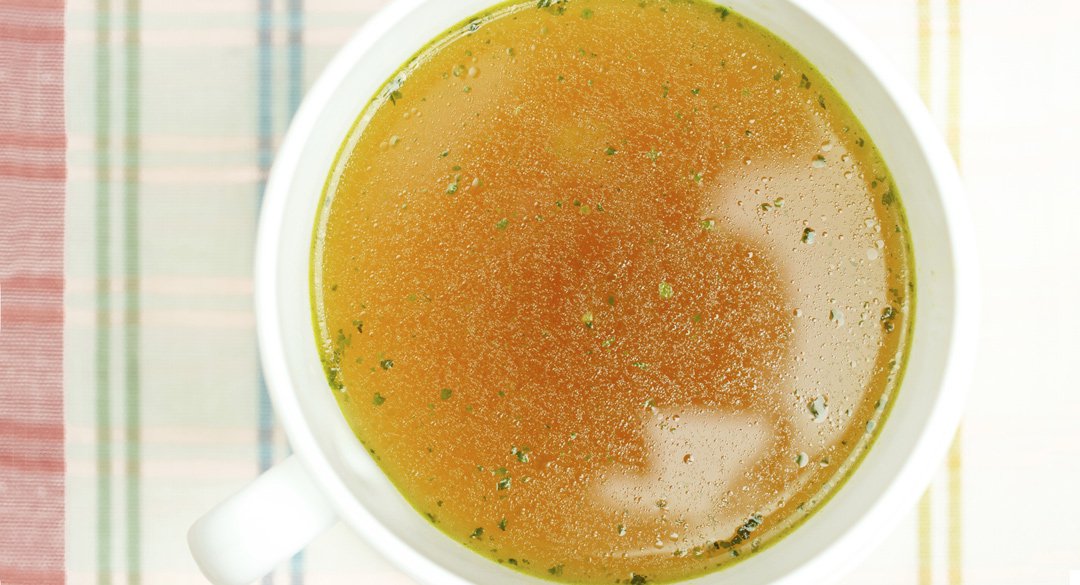
First it was quinoa. Then it was kale. Chia seeds had a moment in the sun, as did flax. But another age-old food is being touted as the newest, hottest nutritional all-star: bone broth.
What is bone broth?
Unlike regular broths, which are typically made by boiling meats, vegetables, or both, for one to two hours, bone broth preparation is much more time-intensive. Poultry, beef, or fish bones are boiled until they disintegrate, releasing their proteins and deep flavors into the liquid. This process can take anywhere from four to 48 hours.
Regular broth is still a healthy choice. One study found that chicken soup soothes colds and flus thanks to its amino acid content, which reduces inflammation in the respiratory system and aids digestion. But bone broth advocates believe the extended cooking time makes it more nutrient-dense.
What are the supposed benefits?
Although there has been virtually no clinical research done specifically on bone broth, its properties are enough to convince some experts of its overall nutritional merit. Bone broth is thought to ease everything from allergies and food sensitivities to arthritis and autoimmune disorders.
One argument for its potential healing properties is the variety of easily absorbable minerals found in the broth, including bone-building calcium, magnesium, phosphorus, and silicon, and protein-bonding sulfur. Bone broth also contains chondroitin sulfates and glucosamine, which are often sold as supplements to reduce inflammation and arthritis. Another reason the broth could ease joint pain is its omega-3 fatty acid and conjugated linoleic acid (CLA) content, which experts believe can reduce inflammation and soothe symptoms of certain inflammatory conditions.
People believe that bone broth can also positively influence digestive health. It contains gelatin, a protein made from animal products, which some experts claim can be an effective remedy for leaky gut syndrome. Gelatin helps seal holes in the intestines that are associated with food allergies and autoimmune conditions, and is a key component in both the Gut and Psychology Syndrome (GAPS) and Autoimmune Paleo (AIP) diets, which are designed to address gut issues and promote healthy digestion.
Gelatin may have other benefits as well: The substance contains the non-essential amino acids proline and glycine, which are important factors in cartilage and collagen production. Although the evidence is still insufficient, some experts also believe the collagen in gelatin can strengthen bones and joints, and the glycosaminoglycans (GAGs) in bone broth, like glucosamine, may potentially relieve aching joints by stimulating cells to create new collagen in the joints.
Should I try it?
Sure—there’s no reason not to drink bone broth. One Medical Group’s Malcolm Thaler, MD, says, “All bone broth is a good source of lots of healthy nutrients.” As for its purported health benefits, however, Thaler says, “It’s no miracle cure for everything that ails you, but it is good for you.”
Where do I get it?
If you’re curious to investigate the benefits of bone broth for yourself, there are several ways to introduce it to your diet:
- Make it at home. Start with good-quality bones or buy a whole chicken and save the bones. Fill one-third of a pot or slow cooker with the bones and add a pinch of salt and enough water to cover, Bring to a boil and let simmer for at least 4 hours. Strain and refrigerate (if cooked for long enough, the collagen will solidify and the broth will turn to gel).
- Buy it online. You can order the broth online from California-based chef Lance Roll’s The Brothery.
- Pick it up in person. The growing popularity of bone broth means that there are many restaurants that sell it. In San Francisco, you can get a cup at Empero Taste, while New Yorkers can line up for a variety of flavors at East Village broth bar Brodo. Los Angeles’ Belcampo Meat Co. in the Grand Central Market also offers cups of broth as a side.
The One Medical blog is published by One Medical, a national, modern primary care practice pairing 24/7 virtual care services with inviting and convenient in-person care at over 100 locations across the U.S. One Medical is on a mission to transform health care for all through a human-centered, technology-powered approach to caring for people at every stage of life.
Any general advice posted on our blog, website, or app is for informational purposes only and is not intended to replace or substitute for any medical or other advice. 1Life Healthcare, Inc. and the One Medical entities make no representations or warranties and expressly disclaim any and all liability concerning any treatment, action by, or effect on any person following the general information offered or provided within or through the blog, website, or app. If you have specific concerns or a situation arises in which you require medical advice, you should consult with an appropriately trained and qualified medical services provider.
